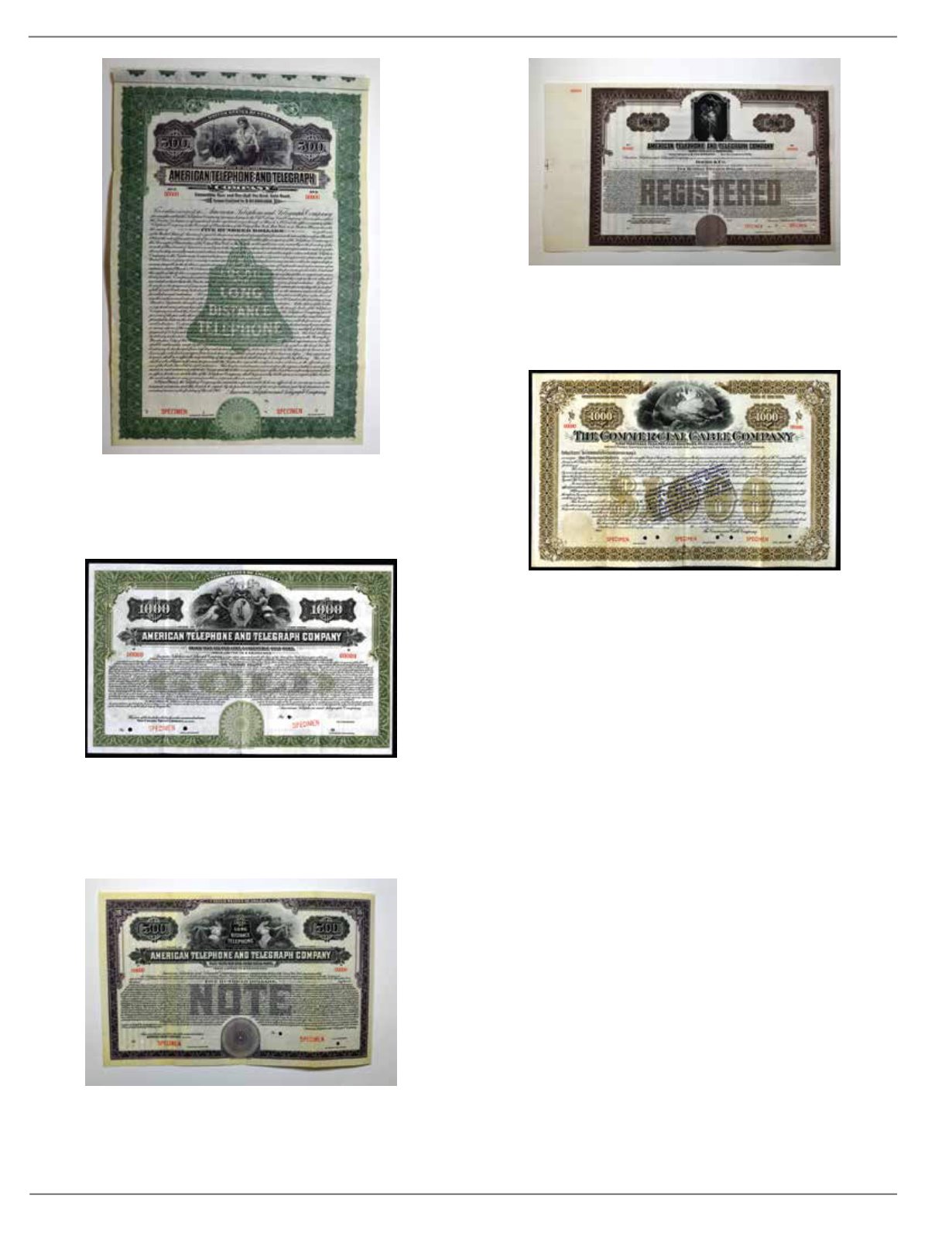

Archives International Auctions- AIAXXVII
182
August 4,2015
Archives International Auctions
www.archivesinternational.com936
936 AmericanTelephone andTelegraphCo., 1913 Specimen Bond.NY.
$500, Specimen 4 1/2% Gold Coupon Bond, Black on green under-
print of AT&T Logo with seated allegorical woman on top,VF, ABNC.
Rare early AT&T Bond. ��������������������������������������������������������� Est.
$90-180
937
937 American Telephone and Telegraph Co., 1918 Specimen Bond.New York, $1000 Specimen 7 Year 6% Convertible Gold Bond. Hor-
izontal format. Allegorical women flank AT&T and company logo
bell vignette. POC. Coupons attached. XF Condition. ABNC. Rare
bond. ����������������������������������������������������������������������������������� Est.
$90-180
938
938 American Telephone and Telegraph Co., 1919 Specimen Bond.NY. $500, Specimen 5Year 6% Gold Coupon Bond or note, Black on
purple with seated allegorical woman flankingAT&T logo on top,VF,
ABNC. Rare early AT&T Bond.����������������������������������������������� Est.
$75-150
939
939 AmericanTelephone andTelegraphCo., 1940 Specimen Bond.NY.
$500,000. Specimen Registered 30Year 2 3/4%Bond, Black on brown
underprint with standing angel holding cables and lightening bolts
on top, VF, ABNC. Very Attractive and scarce. ���������������������� Est.
$90-180
940
940 Commercial Cable Co., 1897 Specimen Bond.New York, 1897,
$1000, Specimen Registered 1st Mortgage 4% 500Year Gold Bond,
Horizontal format, View of North America with telegraph stretching
across Atlantic to Europe, Overprinted in black “Coupon Bonds and
registered bonds are interchangeable...”, POC’s, VF-XF condition,
Franklin BNC. The Commercial Cable Company was founded in the
United States in 1884 by John William Mackay and James Gordon
Bennett, Jr. Their motivation was to break the then virtual monop-
oly of Jay Gould on transatlantic telegraphy and bring down prices
(particularly for Bennett’s newspaper empire). Commercial Cable
also had a relationship with the German Atlantic submarine cable
system. Domestically the cable distributed its cable traffic through
its partner firm the Postal Telegraph Company. Together these com-
panies were all part of the Mackay Companies, also known as the
Associated Companies. John Mackay’s son, Clarence Mackay, took
over the firm by the early 20th century and led it duringWorldWar I.
The company flourished for a time but in 1928, together with other
elements of the Mackay System, came under the control of Interna-
tional Telephone and Telegraph (ITT) under a wholly owned subsidi-
ary, the Postal Telegraph &Cable Corporation. This would be reorga-
nized in 1935, withCommercial Cable becoming part of theAmerican
Cable and Radio Corporation�����������������������������������������������Est.
$120-240



















